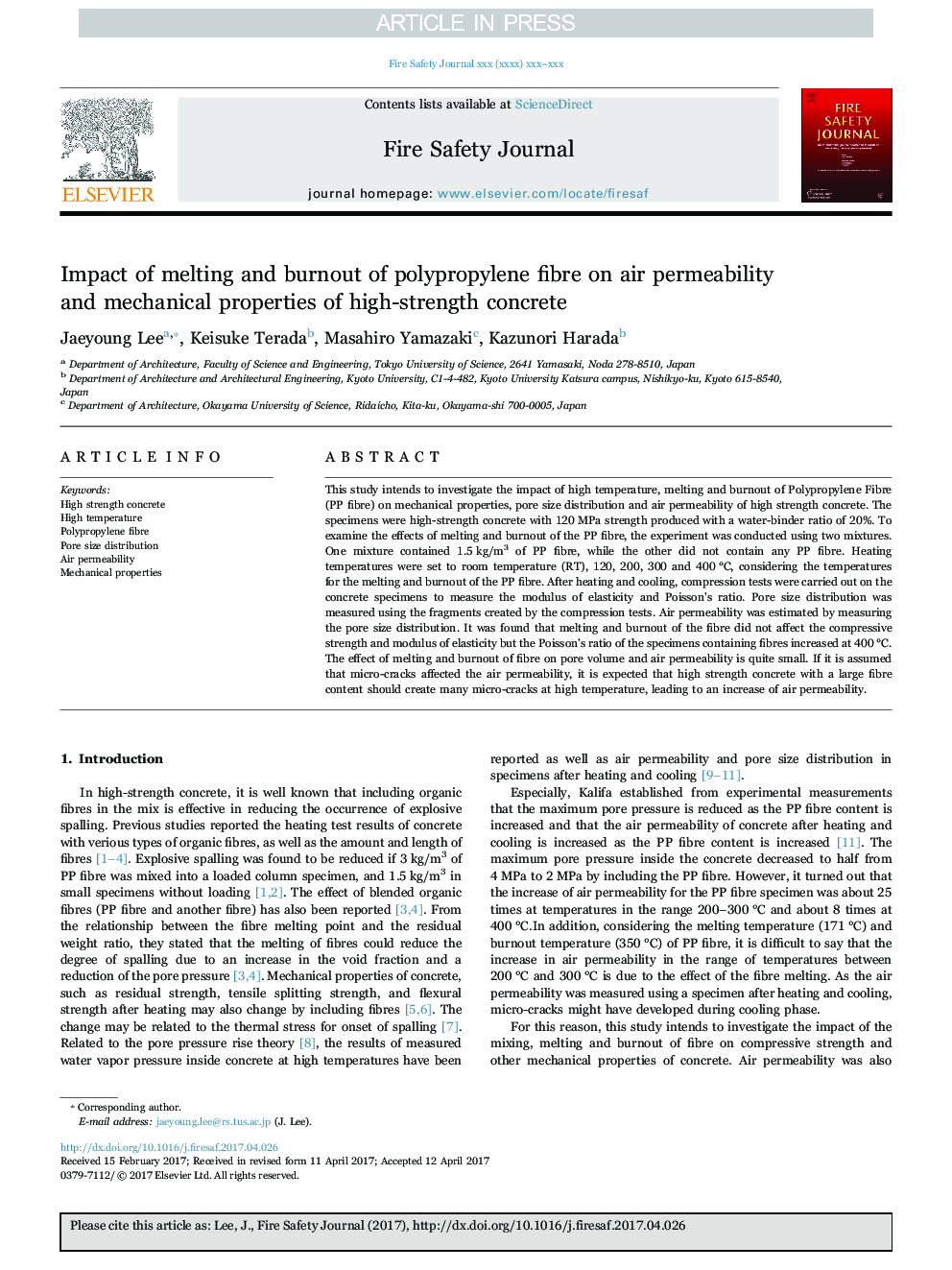| Article ID | Journal | Published Year | Pages | File Type |
|---|---|---|---|---|
| 4920938 | Fire Safety Journal | 2017 | 8 Pages |
Abstract
This study intends to investigate the impact of high temperature, melting and burnout of Polypropylene Fibre (PP fibre) on mechanical properties, pore size distribution and air permeability of high strength concrete. The specimens were high-strength concrete with 120 MPa strength produced with a water-binder ratio of 20%. To examine the effects of melting and burnout of the PP fibre, the experiment was conducted using two mixtures. One mixture contained 1.5 kg/m3 of PP fibre, while the other did not contain any PP fibre. Heating temperatures were set to room temperature (RT), 120, 200, 300 and 400 °C, considering the temperatures for the melting and burnout of the PP fibre. After heating and cooling, compression tests were carried out on the concrete specimens to measure the modulus of elasticity and Poisson's ratio. Pore size distribution was measured using the fragments created by the compression tests. Air permeability was estimated by measuring the pore size distribution. It was found that melting and burnout of the fibre did not affect the compressive strength and modulus of elasticity but the Poisson's ratio of the specimens containing fibres increased at 400 °C. The effect of melting and burnout of fibre on pore volume and air permeability is quite small. If it is assumed that micro-cracks affected the air permeability, it is expected that high strength concrete with a large fibre content should create many micro-cracks at high temperature, leading to an increase of air permeability.
Keywords
Related Topics
Physical Sciences and Engineering
Engineering
Civil and Structural Engineering
Authors
Jaeyoung Lee, Keisuke Terada, Masahiro Yamazaki, Kazunori Harada,
